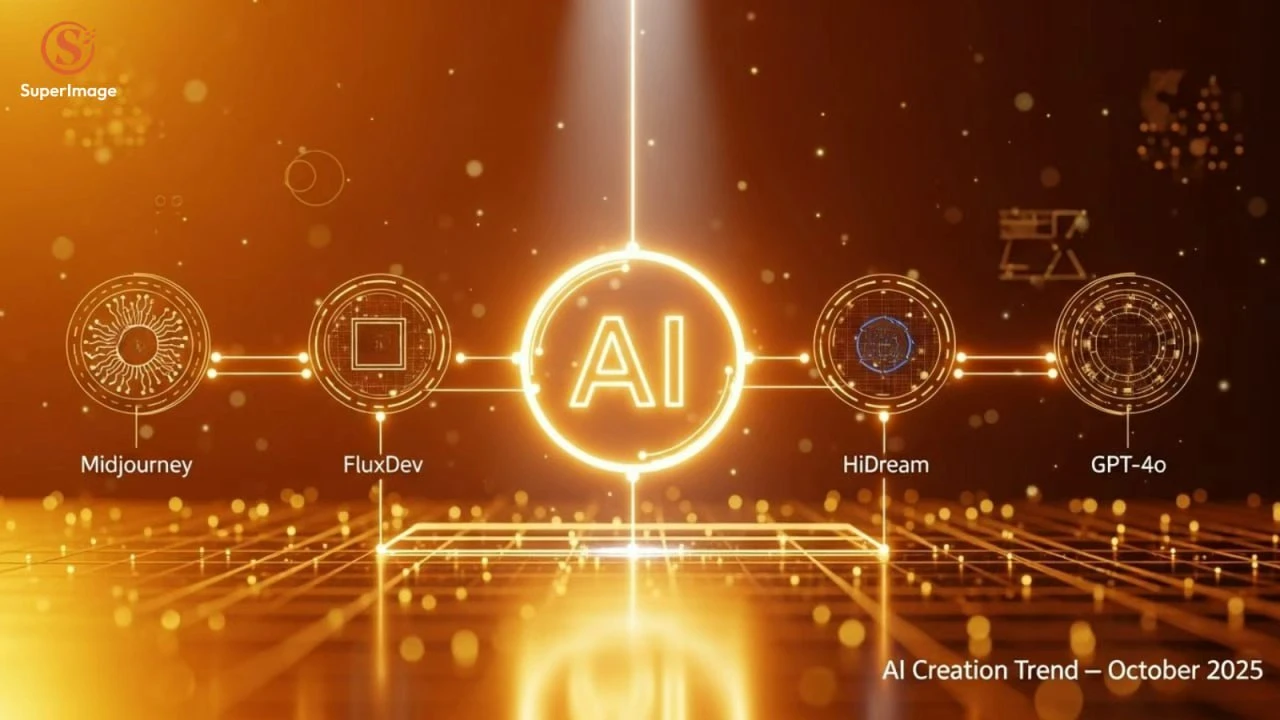Design Tools Are Going Multi-Model — What Today’s AI Headlines Mean for SuperImage Creators

Multi-model AI image generation tools evolving for designers and creators
The news in one minute
• Photoshop’s Generative Fill is expanding model choice (Firefly updates and partner models), reflecting a clear industry pivot toward switchable engines inside designer tools. That means more control over style, realism and speed without leaving Photoshop. Adobe Blog+1
• Midjourney just landed on a new creation platform (PicLumen), making high-quality generations accessible to more creators right where they work. The signal: distribution keeps widening, and creators expect fast, flexible image tools wherever they are. Blockchain News
Takeaway: the market is standardizing on choice over lock-in. Designers want the right model for each brief and a workflow that doesn’t punish iteration.
Models we plan to support at launch
• Midjourney — expressive, stylized visuals and strong art direction
• FluxDev — fast, flexible diffusion for detail-rich, prompt-faithful results
• HiDream — crisp textures and balanced color; great for posters and concept art
• GPT-4o — multimodal intelligence to interpret complex prompts and scenes
(Model lineup may evolve as we keep testing and listening to your feedback.)
Why this favors SuperImage
SuperImage was built around multi-model text-to-image and cost-efficient iteration:
• Model choice: Run the same prompt across multiple engines (e.g., FLUX-style, Sana-style, CogView-style, HiDream-style) and keep the strongest result—the same “pick the right engine” idea now surfacing in Photoshop. (Our catalog evolves over time.)
• Lower effective cost: A decentralized, miner-powered GPU network widens capacity and helps keep queues short and price-performance competitive when demand spikes. That matters when you’re iterating dozens of times to nail a brand look.
• Frictionless starts: Create in the web app (and supporting flows) with clear size and style controls, then upscale only the keeper—fewer wasted credits, faster delivery.
Bottom line: as flagship tools go multi-model, SuperImage turns that trend into more usable images per session at a lower total cost.
A 10-minute workflow you can steal today
1. Write an intent prompt: subject + mood + composition.
Example: “studio product shot, soft rim-light, balanced composition, clean edges.”
2. Fan out across 2–3 models and compare side-by-side; don’t debate—generate.
3. Add structure cues (“sharp textures,” “natural color,” “subtle film grain”) to stabilize detail.
4. Micro-edit, don’t rewrite: tweak nouns/adjectives and re-roll.
5. Upscale last once composition works to save time and credits.
For designers, agencies, and developers
• Designers & agencies: Treat models like lenses. Multi-model runs raise the keeper rate for campaign-specific looks (photoreal vs. painterly vs. graphic).
• Developers & PMs: Test prompt templates across engines to find which yields the best CTR/engagement for your app—then standardize.
• Teams on deadlines: Elastic GPUs + parallel runs mean faster approvals and fewer late-night revisions.
What to watch next
• More “choose-your-model” in mainstream tools as partners plug into creative suites and Firefly-style hubs expand selection.
• Broader Midjourney-class availability inside third-party platforms, reinforcing creator expectations for instant, everywhere access.
• Rights & policy chatter will continue around AI imagery; expect clearer guidance for commercially safe use inside pro tools.
Create your next set of images on SuperImage—multi-model choice, miner-powered performance, and creator-friendly costs that fit today’s flexible workflows.
Start here: https://www.superimage.ai/app/